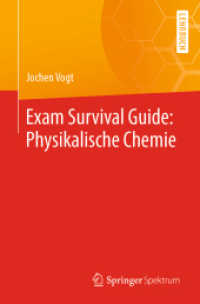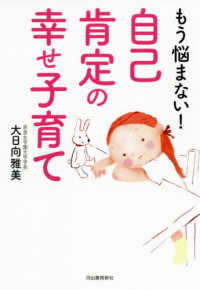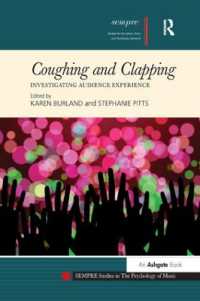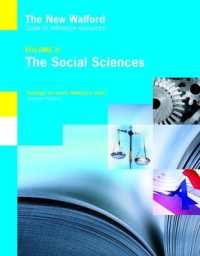Full Description
Chances and Choices: Exploring the Impact of Music Education considers the aims and impact of formative musical experiences, evaluating the extent to which music education of various kinds provides a foundation for lifelong involvement and interest in music. The discussion draws upon rich qualitative data, in which over 100 adults with an active interest in music reflect upon the influences and opportunities that shaped their musical life histories. Pitts addresses the relationship between the claims made for music education, the practice and policy through which those aims are filtered, and the recollections of the lived experiences of learning music in a variety of contexts. This consideration of school music is set in the broader context of learning in the home and community, and illustrates the circumscribed yet immensely powerful role that music teachers and other potential role models can play in nurturing open-minded, active musicians.
The four central chapters focus on generational change in home and school experiences of music; the locations in which musical learning takes place, including cross-cultural comparisons; the characteristics of teachers, parents and others as musical mentors and role models; and the lifelong outcomes of musical engagement for performers, teachers, listeners and adult learners. This analysis is then used to illuminate the claims made for music education in historical and contemporary debate, and to propose ways in which school music might better prepare young people for lifelong engagement in music. Poised to shed new light on the long-term effects of music education, this book is an important resource to understand how we can encourage lifelong involvement with music and general engagement in cultural activities in every individual.
Contents
Chapter 1: Investigating the impact of music education ; 1.1 Whose story? Defining and interpreting musical life histories ; 1.2 Aims, scope and limitations ; 1.3 Approaches to data collection and analysis ; 1.4 Existing research on musical life histories ; 1.5 Global perspectives on music education ; 1.6 Structures and voices in this book ; Interlude A ; Interlude B ; Chapter 2: Learning across generations: musical childhoods in twentieth century Britain ; 2.1 Lifelong learning: a reasonable aim for music education? ; 2.2 Life histories in context: British music education in the twentieth century ; 2.3 Generational trends in formative musical experiences ; 2.3.1 1930s-1950s: gramophones, piano lessons and school assemblies ; 2.3.2 1960s-1970s: encouragement and independence ; 2.3.3 1980s-1990s: musical pluralism and exploration ; 2.4 Historical trends, current debates ; 2.4.1 Classroom music ; 2.4.2 Music outside the classroom ; 2.4.3 Teacher and parent attitudes ; 2.4.4 Music in the home ; 2.4.5 Lifelong learning and involvement ; Interlude C ; Interlude D ; Chapter 3: Locations for musical learning ; 3.1 Where musical learning happens ; 3.2 The characteristics of supportive musical environments ; 3.3 Extra-curricular music-making ; 3.4 Musical self-education ; 3.5 An Italian perspective - music as specialist education ; 3.6 Summary: situated learning for music ; Interlude E ; Interlude F ; Chapter 4: freeiring, affirming, challenging: significant people in musical learning 106 ; 4.1 What makes a memorable classroom music teacher? ; 4.2 Instrumental teachers as mentors ; 4.3 Parents as role models and mentors ; 4.4 Siblings, extended family and friendships as sources of musical learning ; 4.5 Learning from learning: becoming teachers and parents ; 4.6 Summary: musical supporters and role models ; Interlude G ; Interlude H ; Chapter 5: Opportunities and outcomes in lifelong musical engagement ; 5.1 Musical routes and roots ; 5.2 Becoming music educators ; 5.3 Becoming music-makers ; 5.4 Becoming adult learners ; 5.5 Becoming listeners and concert-goers ; 5.6 Summary: foundations for lifelong musical involvement ; Interlude I ; Interlude J ; Chapter 6: Rhetoric and reality: the real impact of music education ; 6.1 Overview: learning from life histories ; 6.2 Historical rhetoric and remembered reality ; 6.3 Contemporary rhetoric and future opportunities ; 6.4 Summary: relevance and timelessness in musical learning ; Interlude K ; Interlude L ; Chapter 7: Chances, choices and conclusions ; 7.1 Chances and choices in musical education ; 7.2 The usefulness of life history approaches ; 7.3 Recommendations and future directions ; Postlude ; Glossary ; References ; Index








